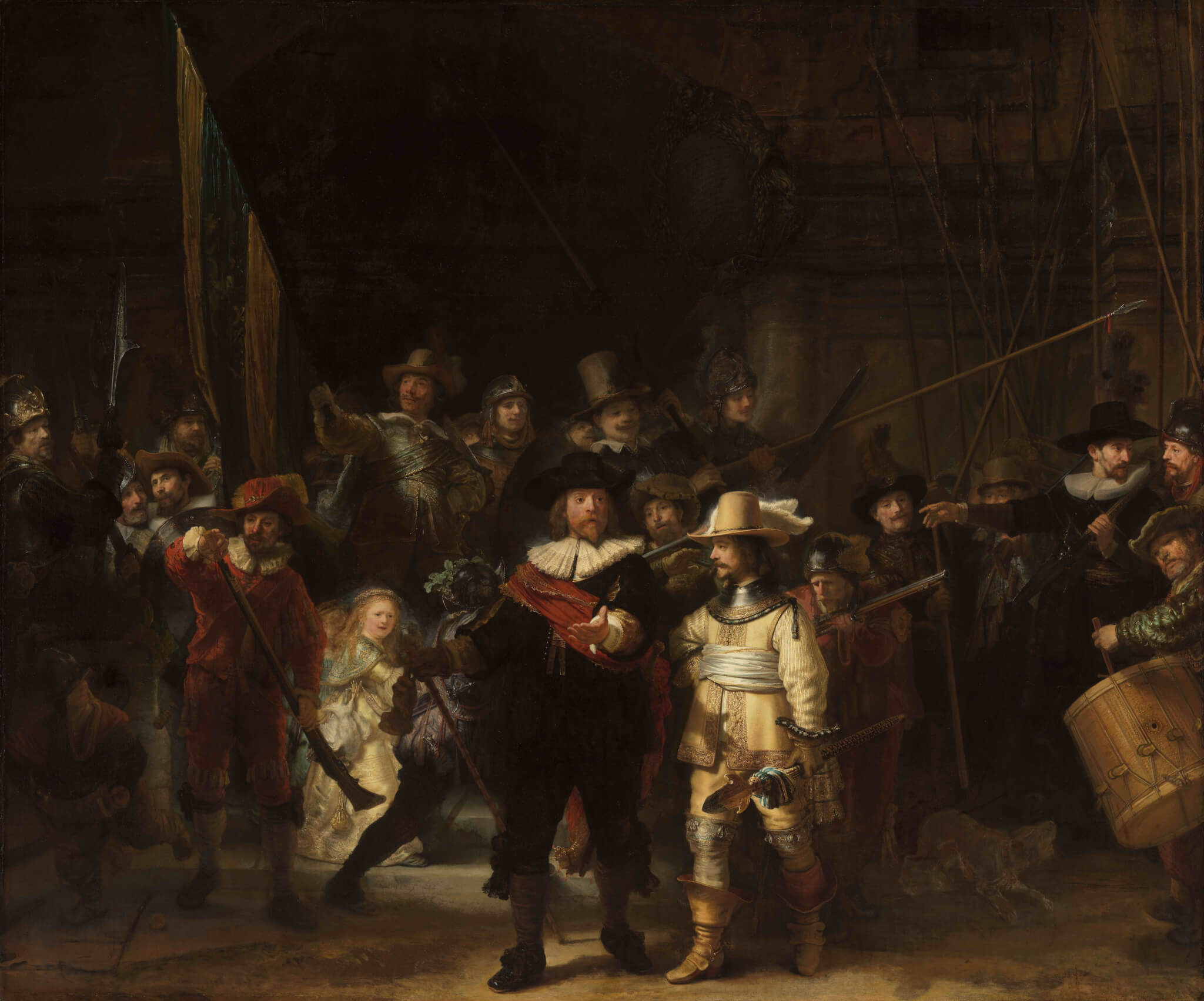AMSTERDAM — Painted in 1642, The Night Watch is probably Rembrandt’s most famous painting. Considered a masterpiece of the Dutch Golden Age, the painting is quite large (12ft x14.5ft) and dramatically makes use of light and shadow to depict the city’s voluntary citizen militia at the time. Displayed at the Rijksmuseum in Amsterdam, the painting has been undergoing scrupulous conservations and research efforts as part of Operation Night Watch since 2019. Now, an international team of scientists is reporting a rare lead compound is present in the painting itself.
The finding marks the first time ever such a discovery has been made, providing valuable new insights into 17th century painting techniques and the conservation history of the painting.
Within the framework of Operation Night Watch, a team of international researchers in collaboration with the Rijksmuseum, joined forces to analyze how the painting materials react chemically and with time.
More specifically, scientists combined multi-scale imaging methods to chemically study the materials used by Rembrandt while painting The Night Watch. An X-ray scanning instrument developed at the University of Antwerp, Belgium was applied directly to the painting, but tiny fragments taken from the painting were also studied via synchrotron micro X-ray probes, at the ESRF, the European Synchrotron (France), and the PETRA-III facility in Germany.

This dual approach revealed the presence of a rare and unexpected organo-metallic compound called lead formate. The compound had never been found in any historic paintings before this project.
“In paintings, lead formates have only been reported once in 2020, but in model paintings (mock-up, fresh paints). And there, surprise: not only do we discover lead formates, but we identify them in areas where there is no lead pigment, white, yellow. We think that probably they disappear fast, this is why they were not detected in old master paintings until now,” explains Victor Gonzalez, a researcher from The French National Centre for Scientific Research (CNRS) and first author of the paper, in a release.
Why didn’t lead formates disappear in Rembrandt’s ‘Night Watch’?
Study authors posit answering that question is key to understanding Rembrandt as a painter.
“In Operation Night Watch we focus on Rembrandt’s painting technique, the condition of the painting and how we can best preserve it for future generations. The lead formate gives us valuable new clues about the possible use of lead-based oil paint by Rembrandt and the potential impact of oil-based varnishes from past conservation treatments, and the complex chemistry of historic oil paintings,” adds Katrien Keune, head of science at Rijksmuseum and professor at the University of Amsterdam.
Where does this compound come from? Could it perhaps provide a glimpse into Rembrandt’s workshop recipes, or shed light on the chemical mechanisms active in the layers of old paint? In pursuit of answers, researchers analyzed fragments taken from The Night Watch, as well as model samples prepped in a lab simulating the painter’s formulations.
The research team initially went with the hypothesis that Rembrandt used an organic medium (linseed oil) containing dissolved lead oxide (PbO litharge) to enhance its siccative properties.

(Credit: Antwerp X-ray Imaging and Spectroscopy Research group – University of Antwerp, Belgium)
“Thanks to the unique analytical performance of the ESRF, the world’s brightest synchrotron light source, we could map the presence of formates at a micrometric scale, and follow their formation over time,” explains Marine Cotte, scientist at the ESRF.
The spatial organization of the compounds at the micro-scale, as well as the dynamics of their formulation, enabled researchers to suggest new hypotheses regarding the chemical conditions of their in situ crystallization in old paint layers. “In addition to providing information on Rembrandt’s pictorial techniques, this research opens up new avenues on the reactivity of historical pigments, and therefore on the preservation of heritage,” concludes Koen Janssens, Professor at the University of Antwerp.
The research team says their next step is to conduct more research on the origin of these formates, and perhaps determine if they could originate from past restoration treatments.

Researchers collaborating on the study include scientists from the CNRS, the ESRF the European Synchrotron, the University of Amsterdam and the University of Antwerp. The study is published in Angewandte Chemie.
